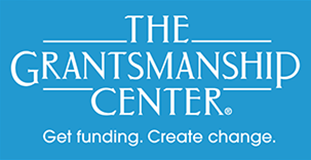The federal grant money nonprofits receive is public, taxpayer money. That means the federal government is obligated to award grants to nonprofits (and others) through an open, transparent, and objective review process. But objective does not mean easy! Government grant applications are the most demanding to prepare and competition for government funding is fierce. If you are just starting out as a grants professional, you’ll probably need help applying for federal grants.
The availability of funding in any year depends on the federal budget and on the priorities of the federal agencies that run the grant competitions. Because of that, the amount of money available for federal grants to nonprofits is heavily influenced by the political environment, national concerns, and national events. Tuning in to the national scene will help your nonprofit understand where federal grant money comes from and where it will go. This knowledge will help you get government funding for your community.
While federal grant levels vary from year to year (sometimes extremely), big federal grants are common and awards frequently range from $500,000 to millions of dollars. It’s great to bring in big federal dollars to support your work, but remember, once you win big grant awards you’ve got to manage them in compliance with an extensive roster of rules and regulations. If you’re a beginner grants professional, you’ll also need help learning to manage federal funding correctly. Federal grant money must be spent only on approved activities, must be managed to comply with regulations, and is expected to result in measurable results. Free federal grant money is not a reality.
There are several things you can do to prepare to bring in federal grant money for your nonprofit.
- You will need thorough documentation of the problem your organization will address. No matter what you need the funding to accomplish—funding to help children succeed, funding to help the homeless, funding to help build healthy communities, funding for the arts, etc.—you’ll need lots of facts and figures that show what the situation you are concerned about looks like in your service area, why it is significant, and why it is happening. Start gathering data now and keep it current.
- You’ll have to propose specific, measurable, results that you plan to achieve. Vague promises are not enough and will significantly dull your competitive edge. Stating that your organization’s project will “help children succeed,” “improve the quality of life,” “reduce hunger,” or “improve reading skills,” is not good enough. To get a big federal grant you’ll have to go much farther. Federal agencies want to know how many people will change, in what way, to what degree, within what time frame, and as measured by what? Start considering what changes you can realistically expect to achieve through your organization’s work.
- You’ll have to propose a program approach that can realistically produce the results you expect to achieve. That means you’ll have to provide convincing evidence that the program is likely to work as you expect. Many federal agencies dictate that nonprofits use evidence-based approaches in programs supported with tax payer funds. Learn all you can about your field and what types of approaches have been proven to produce results. Gather documentation. Get your ducks in a row.
There’s lots more you’ll need to learn, and there are many other ways you can begin preparing your nonprofit to get federal funding to support its work in the community. One of the best ways you can learn what you need to know is by attending The Grantsmanship Center’s federal grants training, Competing for Federal Grants. This government grants training workshop is thorough and by participating fully in this federal grants class, you'll boost your competitive edge and be better prepared to find federal funding for your nonprofit.


